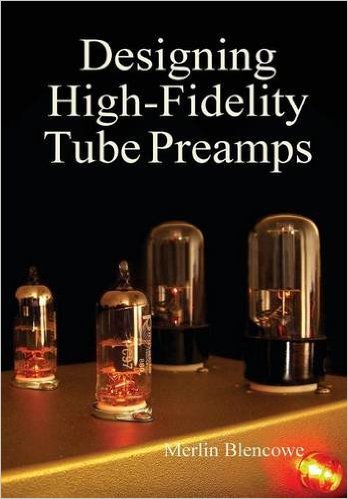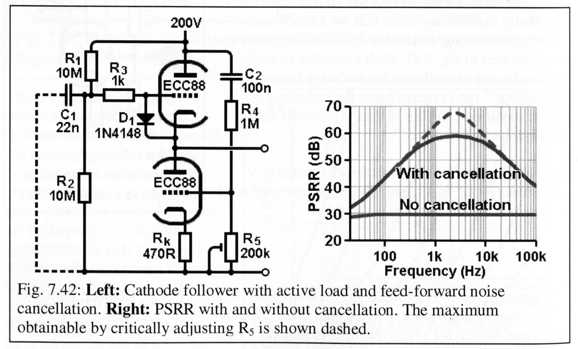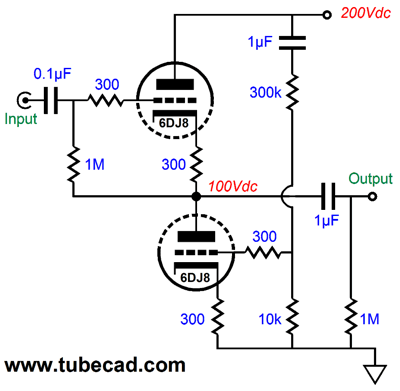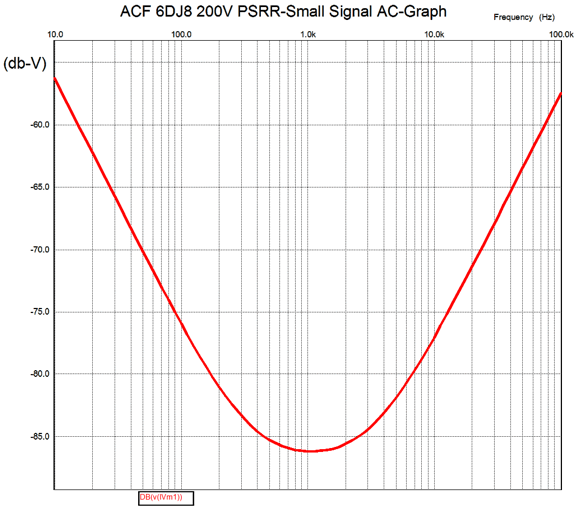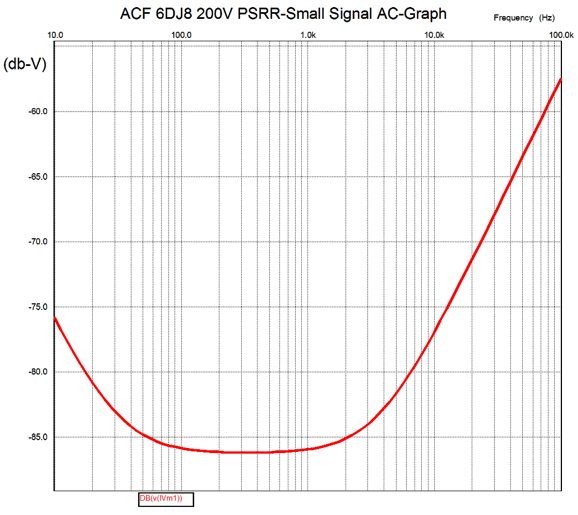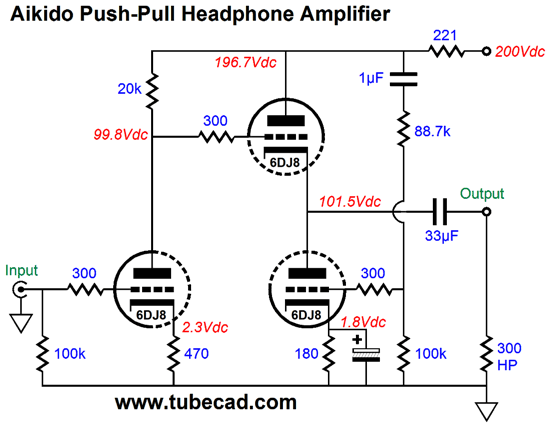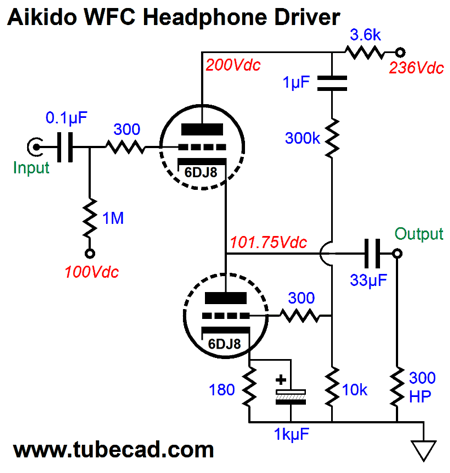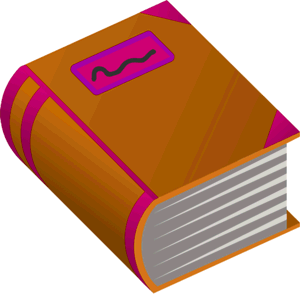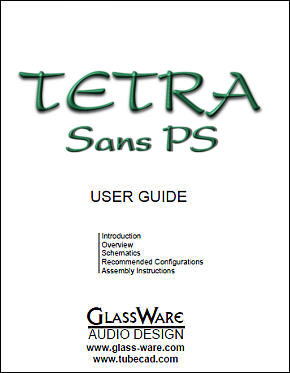| John Broskie's Guide to Tube Circuit Analysis & Design |
21 May 2016 Book Review:
Designing High-Fidelity Tube Preamps
Review: Designing High-Fidelity Tube Preamps (By the way, as you might have guessed from my many posts, I am a voracious reader. When I am lucky enough to be staying at a B & B, the first thing I hunt down is the bookshelf. In addition, I read writers such as Sir Thomas Browne and Samuel Johnson and Seneca for pleasure. Believe me, if you can read Browne, you can read anybody.) Second, as I looked over the table of contents for his new book, my impression was that it looked very much like a textbook. Not a good omen. Textbooks weigh upon the soul—heavily. No matter what the topic, all textbooks seemingly run into the identical dreary sameness. Books that were either written by or written for the living dead. Third, reviewing books written by your friends (or acquaintances or enemies) is tough. William Hazlitt in his essay, On Reading Old Books, explicates the problem:
"the pure, silent air of immortality," Hazlitt was the man. Such sentences make me dizzy. Well, I have never met Mr. Blencowe, but we do exchange e-mails, which moves him out of the category of complete strangers. Well, I am happy to say that all three fears were unfounded. Since I have already mentioned Johnson, I might as well quote him,
Verily. Designing High-Fidelity Tube Preamps turned out to be one such spark. Merlin has found his voice, which pleases far more than the odd, stilted voice in Designing Power Supplies for Tube Amplifiers. Moreover, in his latest effort, he quickly gets to the point. For example, his chapters on electronic theory and practical components do not weary the mind. Indeed, he interjects enough personal views to make the hard trip, if not exactly easy, at least pleasurable. I am often asked to recommend a good tube primer, a book that will move the tube novice into the fold of knowledgeable tube practitioners. This is tough task, as many of the great tube books are out of print and were either long ago stolen from or discarded by your public library. And even if they are to be found, these books seldom give tube-based audio anything more than a few-pages gloss. In contrast, Designing High-Fidelity Tube Preamps is audio centric. From the blurb on the book's back jacket:
Here is the list of chapter titles:
The urge to quote Samuel Johnson again is great—well, at least it is from me. I will resist the urge and quote myself instead. The following was from my review of his Designing Power Supplies for Tube Amplifiers.
The answer is yes, as you cannot find everything contained in Designing High-Fidelity Tube Preamps on the web. And even if you could, you wouldn't want to try, as all the effort and all the false starts and all the twists along the way would takes months, if not years. Moreover, I must mention that his new book is not only theoretical, as he provides gobs of practical, get your hands dirty, advice for actual construction. In short, for less than $40 Mr. Blencowe delivers a tube-audio treasure. There can be only one conclusion: buy this book. His web site lists three sources: I assume that the Lulu link would provide Merlin with the most profit, so I would start there. Since no book review would be complete without some nitpicking and grumbling, I will not disappoint you. But first, I would have liked to provide another quote from Johnson, but I could not find it. The gist of what the dear doctor said was that the writer of essays (blog posts also count) has a much easier time than the writer of a thick book does, as shorter piece of writing exempts the writer from encountering logical inconsistencies and plain bone-head mistakes that are implicit yet hidden in his short work, but which would be revealed in a longer work. Moreover, reviewing is much easier than creating. This reminds me of what I wrote back in blog number 116:
Of course, Samuel Johnson put it best:
So, having placed my critic hat firmly on my head, what didn't I like about Designing High-Fidelity Tube Preamps? Tube circuits—there weren't enough interesting topologies. He covers the the two generic, single-triode circuits, the cathode follower and grounded-cathode amplifier, but not the grounded-grid amplifier or the inverted amplifier (aka grid amplifier), wherein we use the grid as a "plate" and the plate as a "grid." In addition, he omits the anode-follower (plate follower) topology. He then moves on to compound circuits that use two triodes, such as the bootstrapped pair (where a grounded-cathode amplifier cascades into a cathode follower and a capacitor attaches from the follower's output to the input tubes plate circuit, which is fundamentally a modified SRPP), cascode, cathode-coupled, CCDA, SRPP, and White cathode follower. He even covers the Aikido cathode follower, but gets the design example slightly wrong.
First, the protection diode is not absolutely needed, as the bottom triode would have to be hot to provide a sustained current path into the top triode's cathode. Second, the top triode should get its own cathode resistor, for if the bottom triode's cathode resistor is too large in value, no power-supply-noise null will be possible, as the bottom triode's transconductance will have been too compromised. Third, capacitor C2 is too small in value and resistors R4 & R5 are too large in value, as the bottom triode does present a fair amount of Miller-effect capacitance. See blog number 188. Assuming that the input signal is noise free, say a CD player or DAC or tuner (in other words, an external signal source), then the following arrangement works well.
Because both triode share the same cathode resistor value, the ratio between the power-supply-noise voltage divider resistors is simple: the top resistor should be (mu - 1) times bigger than the bottom resistor. In this example the SPICE model of the 6DJ8 used a mu of 31, so the 300k resistor is the right value. Running the above circuit under a SPICE simulation produced the following result.
If we replace the 1µF capacitor at the top of the voltage-divider string with a 10µF capacitor, we get this result.
Indeed, you might use a 100µF electrolytic capacitor, which would extend the PSRR enhancement down to 10Hz; an electrolytic capacitor, however, does run the risk of current leakage, which presents a DC offset voltage to the bottom triode's grid (this might actual prove an advantage). Practically, however, we get the most bang per microfarad by moving the null center only down to twice the wall-voltage frequency, so 120Hz in America and 100Hz in Europe. But, John, your version presents an output impedance of 400 ohms, whereas his version only presents 100 ohms. Sure. But just how low an output impedance do you really need? If you are willing to accept a higher idle current, the two cathode resistors can be lowered to 180 ohms. Remember that the cathode resistors perform three tasks: they set the idle current, they linearize the triodes, and the top resistor protects the cathode follower from capacitive loads. If you are willing to forgo the last two features, another approach would be to eliminate the top cathode resistor and bypass the bottom cathode resistor with a big capacitor. If the output impedance needs to be something close to zero, then solid-state gear is the better answer. And if the load is a brutally-low 300 ohms, the impedance of many fine German headphones, then a push-pull output stage is needed, such as the following.
The above is a complete tube headphone amplifier for 300-ohm loads. As the White cathode follower has gotten my full Aikido treatment, the above circuit not only delivers big symmetrical current swings into the 300-ohm load, the PSRR is exemplary. Note that the ratio between the power-supply-noise voltage divider resistors has changed. Why? The assumption that the White cathode follower stage would see a noise-free input signal is no longer true, as the grounded-cathode input stage, in this example but not in all examples, leaks 50% of the the power-supply noise at its output. Thus, we use the classic Aikido formula for the ratio: R2 = R1(mu - 2) / (mu + 2) where R2 is the top resistor; R1, the bottom resistor. See blog number 255 for more details. What if you do not want a complete headphone amplifier, but only a White cathode follower stage? We can apply the Aikido magic to the standalone White cathode follower, but we will have to pay the price of a higher B+ voltage, 236Vdc instead of 200Vdc, as we lose so much voltage across the 3.6k current-sense resistor.
The result is equal current swings from top and bottom triodes and excellent PSRR. Returning to Designing High-Fidelity Tube Preamps, the second minor grumble I could make is that the list of tubes that Merlin highlights is a tad too short. I would like to see him cover some sleeping beauties, such as the 6SU7, which is a 6SL7 but with tightly matched triodes. Or the 5963 and 5965, which are late-development dual triodes which are largely immune to cathode-interface problems. Nonetheless, my complaints are few and small. Merlin Blencowe has written a fine tube-focused book. At less than $40, it's a bargain, if not a steal. Buy it.
What is the Best and Easiest Method of Studying? If the topic was something conceptual, such as psychology, I also listed key items that I expected to encounter, such as, What is the definition of the topic or field of study? What is its history? Who are the greats within it? What is its strict purview? What other studies overlap with it? In other words, I never read passively; instead, I read aggressively as a hungry wolf in search of prey. Let's say you just bought Blencowe's book (try saying that three times fast) and you are keen to become a power tube fancier. Or, say you wish to read any difficult book well. Here are some quick tips: make the list of key items that you expect to encounter. With Blencowe's book, list things like current, voltage, power, resistors, capacitors, inductors, transformers, diodes, triodes, pentodes, transconductance. The more you can write down, the more are likely to learn and retain. No matter the textbook's topic, photocopy the its table of contents; then while eating breakfast or waiting in line at the bank, review the headings and observe the book's structure. When reading the book, start with the last section of the chapters first, which should be the chapter's summery. Next, skim and glance through the entire chapter, paying attention to all the subheadings and illustrations and graphs. When looking at a graph, be sure to trace the plots with your finger or pencil point, as the physical act will help burn the plot in your memory. Now, start reading. Once you are done, skim over all that you have just read and re-read the summary or last section. Two or three hours later, quickly go over the chapter again. Before starting the next chapter, re-read the previous chapter's summary or last section. Never highlight as you read, as you do not yet know what is important—i. e. what is just an example and what is a key concept. After you have read the chapter, you can go back and underline what is truly important. Whenever you get one of those "Oh I get it" moments, stop studying and go outside and walk amongst greenery for ten minutes or so before going back to studying. Why? Your brain needs time to consolidate what it has just apprehended. Before going to sleep, quickly review your notes or skim through the chapters that you read earlier.
One psychological problem I encountered was my dread when confronting a super-thick textbook. "How could anyone hope to live long enough to read such an oppressively fat book," I asked myself. My solution was radical: I cut the fat book into chapters, with a kitchen knife. Instead of a single fat book filled with 1,200 pages, I ended up with 30 thin chapters, each only 40 pages long. Yes, slicing a book up is a sort of desecration, but I took some comfort in the belief that the textbook had it coming. (I like to read in bed. Although I am a big brute of a man, I hate heavy books, preferring many thin books to one fat monster. Computer books are the worst offenders.) The key point is that most students view their workload as hurdles that they must clear before moving on to the next one; and once cleared, to be forgotten as quickly as possible. In sharp contrast, I viewed my required studies as poorly-prepared, nearly-inedible, unseemly-looking food that I had to chew over and over again before I could digest it fully, much like a cow eating grass. Education has been defined as casting fake pearls before real swine. We are not in control of the first half of that definition, but we are in control of the second half.
Next Time
User Guides for GlassWare Software Since I am still getting e-mail asking how to buy these GlassWare software programs:
For those of you who still have old computers running Windows XP (32-bit) or any other Windows 32-bit OS, I have setup the download availability of my old old standards: Tube CAD, SE Amp CAD, and Audio Gadgets. The downloads are at the GlassWare-Yahoo store and the price is only $9.95 for each program. http://glass-ware.stores.yahoo.net/adsoffromgla.html So many have asked that I had to do it. WARNING: THESE THREE PROGRAMS WILL NOT RUN UNDER VISTA 64-Bit or WINDOWS 7 & 8 or any other 64-bit OS. One day, I do plan on remaking all of these programs into 64-bit versions, but it will be a huge ordeal, as programming requires vast chunks of noise-free time, something very rare with children running about. Ideally, I would love to come out with versions that run on iPads and Android-OS tablets.
//JRB |
Kit User Guide PDFs
And
High-quality, double-sided, extra thick, 2-oz traces, plated-through holes, dual sets of resistor pads and pads for two coupling capacitors. Stereo and mono, octal and 9-pin printed circuit boards available.
Designed by John Broskie & Made in USA Aikido PCBs for as little as $24 http://glass-ware.stores.yahoo.net/
The Tube CAD Journal's first companion program, TCJ Filter Design lets you design a filter or crossover (passive, OpAmp or tube) without having to check out thick textbooks from the library and without having to breakout the scientific calculator. This program's goal is to provide a quick and easy display not only of the frequency response, but also of the resistor and capacitor values for a passive and active filters and crossovers. TCJ Filter Design is easy to use, but not lightweight, holding over 60 different filter topologies and up to four filter alignments: While the program's main concern is active filters, solid-state and tube, it also does passive filters. In fact, it can be used to calculate passive crossovers for use with speakers by entering 8 ohms as the terminating resistance. Click on the image below to see the full screen capture. Tube crossovers are a major part of this program; both buffered and un-buffered tube based filters along with mono-polar and bipolar power supply topologies are covered. Available on a CD-ROM and a downloadable version (4 Megabytes). |
||
| www.tubecad.com Copyright © 1999-2016 GlassWare All Rights Reserved |

